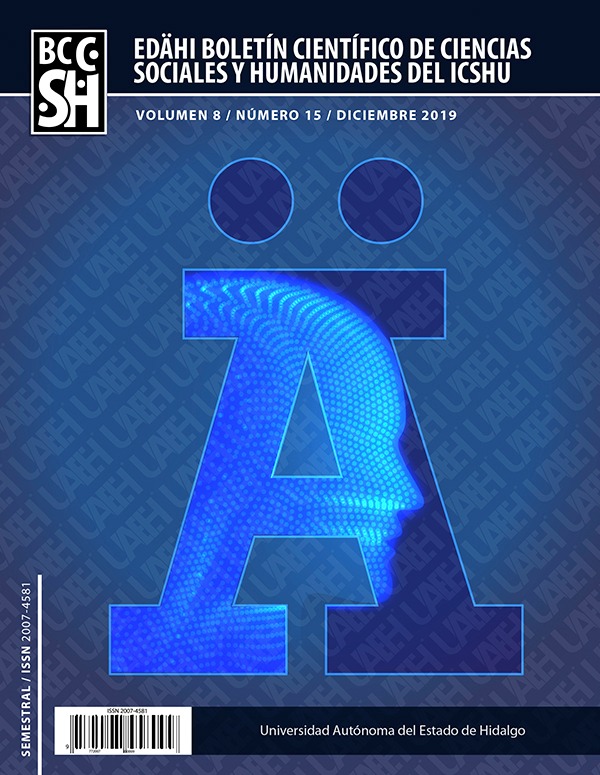Why Paquito does not know how to add? ... forty years later: He already adds but does not multiply and less divide
DOI:
https://doi.org/10.29057/icshu.v8i15.4687Keywords:
basic operations, mistakes, junior schoolAbstract
The numerical manipulation is essential for daily existence, that is a reason why the work focuses attention on the sources and origins of the errors associated with the basic operations (addition subtraction multiplication and division) of the students of the secondary school (children between 12 and 15 years old), is striking the generality of the existence of such errors in a population that has spent at least six years in contact with the topic. To outline the possible reasons for this, a brief description is made (it cannot be otherwise for the extension), on historical textbooks, training programs for students of the degree in primary education, political situations - of the conditions of teachers' work and the inadequate responses of students in the first year of secondary school, of course, others are pending: the beliefs of teachers, the attitudes of students and family members towards school mathematics, the reasons why Results of research in mathematics education have not been installed in teaching (otherwise the central theme of this paper would not exist) and others that surely exist but are not yet explicit (at least for those who sign this document).
Downloads
References
Anghileri, Julie. (1989). “An investigation of young children´s understanding of multiplication”, en: Education Studies in Mathematics, pp 367 - 385. New York. Springer.
Beyer, Walter. (2009). “Catecismos y matemáticas: confluencia de corrientes de pensamiento”, en: Cielo. Paradigma v. 30, n 1, pp 117-150. Maracay. Jun 2009. Consultado 26 de Enero de 2019. Disponible en: http://ve.scielo.org/scielo.php?script=sci_arttext&pid=S1011-22512009000100007.
Carraher, Terezinha, David Carraher, y Analucía, Shliemann. (1991). En la vida diez, en la escuela cero. México. D.F.: Siglo XXI.
Casassus, Juan, Cusato, Sandra, Froemel, Enrique y Palafox, Juan (2000). Laboratorio Latinoamericano de evaluación de la calidad de la Educación. Primero estudio internacional comparativo sobre lenguaje, matemáticas y factores asociados para alumnos del tercer y cuarto grado de la educación básica. Santiago de Chile: UNESCO.
Castro, Encarnación, Rico, Luis y Castro, Enrique. (1988). Números y operaciones. Madrid: Síntesis.
Godino, Juan (2004). Didáctica de las matemáticas para maestros. Enseñanza y aprendizaje de las matemáticas. Granada, España: Universidad de Granada.
Hiebert, James. (1986).Conceptual and procedural knowledge: The case of mathematics. Nuew Jersey: Lawrence Erlbaum Associates,
Morris, Kline (1976). El fracaso de la matemática moderna. México: S XXI.
Milton, Jessica, Flores, Margaret, Moore, Alexcia, Taylor, Ja'Lia, y Burton, Megan, (2019) “Using the concrete-Representational-Abstract Sequence to Teach Conceptual Understanding of Basic Multiplication and Division”. Learning Disability Quarterly. V 42 n1: 32-45.
Sánchez, Framit. (2014). “Algoritmos en operaciones básicas: Alternativas, materiales y recursos en el aula de matemáticas”. Universidad de Granada. Trabajos fin de grado. Facultad de Ciencias de la Educación, pp 11-13. 2 de Mayo de 2019. Disponible en: http://digibug.ugr.es/bitstream/handle/10481/36185/FramitSanchezRafaelManuel.pdf?sequence=1.
Sayan, Hamlyet (2015). “The effects of computer games on the achievement of basic mathematical skills”. Educational Research and Reviews. V 10 n 22: 2846-2853.
SEP (2019). “Desafíos Matemáticos Segundo grado”. Centro de descargas. 2017-2018. Consultado 13 de Mayo de 2019.Disponible en: https://www.cicloescolar.mx/2018/01/desafios-matematicos-segundo-grado-2017.html.
CONALITEG. (2019) Búsqueda histórica de los libros de primaria. Gob. Mx. SEP. 14 de Mayo de 2019. Disponible en: https://historico.conaliteg.gob.mx/content/common/consulta-libros-gb/index.jsf?busqueda=true&nivelEscolar=2&grado=1&materia=&editorial=&tipo=&clave=&titulo=&autor=&selectedyear=1972&anio=1972
SEP (2013). Licenciatura en Educación Primaria. Plan de Estudio 2012. Segundo semestre. México: SEP.
SEP (2002). Lineamientos para la organización del trabajo académico durante el séptimo y octavo semestres. México: SEP
SEP (2012). Licenciatura en Educación Secundaria. México: SEP
SEP (2016). Orientaciones para la organización y usos del tiempo en la jornada escolar de una escuela de tiempo completo. México: SEP.
Thorndike, Eduardo (1926). The Psycology of Aritmetic. New York: Macmillan.
Thorndike, Eduardo (1924). Las aritméticas de Thorndike. Nueva York: Rand McNally.
Tracey, Muir (2012). “What is Reasonable Answer? Ways for Students to Investigate and Develop Their Number Sense”. Australian Primary Mathematics Classroom. V17 N1, 21-28.
Zubieta, Francisco, y Sánchez, Elodia. (1960). Aritmética razonada. México: IPN.
Zuhal, Yilmaz (2017). “Young Children's Number Sense. Development: Related Complexity across Cases of Tree Children”. International Electronic Journal of Elementary Education, v9 n4, pp. 891-902. Editores: Donald N. Cardinal, Meghan Cosie, Audri Sandoval-Gomez. Attallah College of Educational Studies. Oslo / NORWAY. Disponible en: https://www.iejee.com/index.php/IEJEE




















